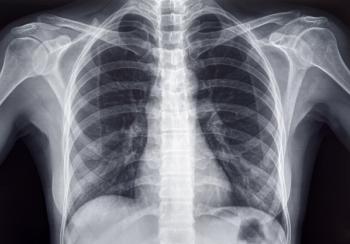
Distance to Lung Cancer Screenings Vary By Race, Ethnic Groups
Native Americans face the longest travel times, even after accounting for distances in rural areas, according to results of a recently published cross-sectional study. Lowering transportation barriers could increase screening and early detection.
Lung cancer screening is critical for early detection, but for some communities, accessing these services may be more challenging than others. A study published last month in
The cross-sectional study, conducted by researchers from Washington State University (WSU) and the Swedish Cancer Institute, analyzed data from over 71,000 U.S. census tracts. A
The results show that American Indian/Alaska Native-majority census tracts had an average distance of 49.6 miles to the nearest lung cancer screening facility, more than five times the distance found in non-Hispanic/White-majority census tracts, which averaged 6.5 miles.
The study also examined how rurality factors into these disparities. Rural locations were found to contribute to the longer travel distances, but even after adjusting for rurality, Native American-majority tracts were still over three times farther from screening centers than in non-Hispanic/White-majority tracts.
In contrast, census tracts with majorities of Asian, Black, or Hispanic populations were generally closer to lung cancer screening facilities. Asian-majority tracts were 16% closer, Black-majority tracts were 39% closer, and Hispanic-majority tracts were 7% closer. However, once rurality was factored in, the distance advantage for Asian and Black tracts was reduced, while Hispanic-majority tracts saw a shift from being closer to being slightly farther from screening centers.
“This analysis showed differences in distance to lung cancer screening facilities by race and ethnicity that could only be partially explained by rurality,” the authors wrote in their conclusion.
These findings highlight the importance of improving access to lung cancer screening for all populations, particularly Native Americans who are
The study had several limitations, the authors acknowledge. It measured distance to the nearest lung cancer screening facility but did not account for factors like capacity or wait times, which could influence access. It also lacked data on transportation methods and cost considerations. Additionally, the analysis did not include facilities in Veterans Health Administration or U.S. Department of Defense locations, which may have led to an underestimation of available sites. Lastly, misclassification of American Indian/Alaska Native race in census data posed challenges for accurately addressing health disparities in this population.
Solmaz Amiri, D. Des., M.Sc., the lead author of the study and a researcher at WSU’s Elson S. Floyd College of Medicine, emphasized the need for targeted interventions. “The study implications include recommendations for strategically placing future lung cancer screening facilities to ensure equitable access, particularly for high-risk populations, given the substantial investment required for their establishment and maintenance,” Amiri said in an email interview with MHE.
“Additional considerations include addressing transportation barriers for patients and evaluating the feasibility of mobile lung cancer screening units in underserved areas,” she said.
Newsletter
Get the latest industry news, event updates, and more from Managed healthcare Executive.






















































